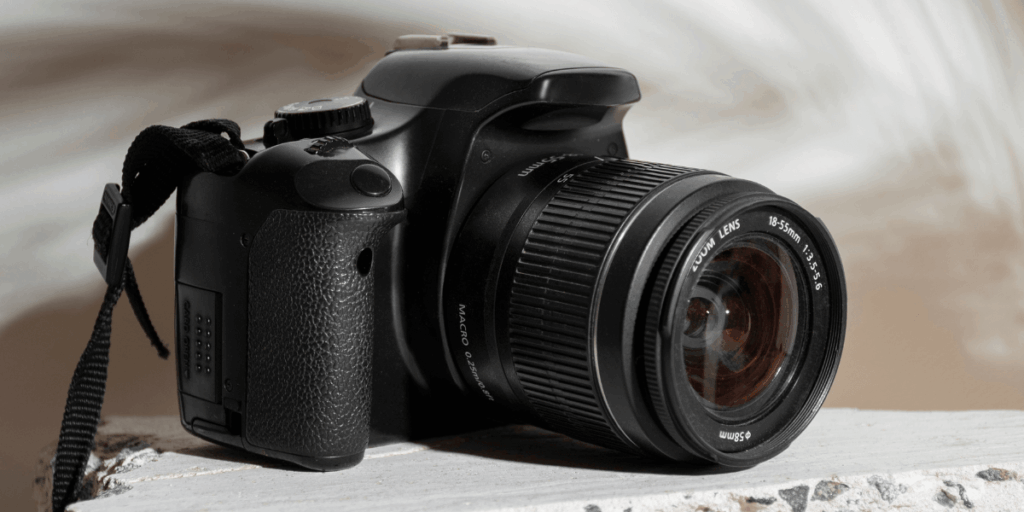- Camera
- Camera Lenses
- Camera Gimbals
- Camera Accessories
- Abs Flight Case
- Articulated Magic Arm
- Bag Case
- Batteries Power
- Blackmagic Accessories
- Camera Carry Strap
- Camera Dry Box
- Cleaning Kit
- Cups
- Dji Accessories
- Filters Accessories
- Flash Diffuser
- Gopro Accessories
- Insta360 Accessories
- Laptop Accessories
- Lens Hoods Caps
- Memory Cards
- Micro Photography
- Tripods Support
- Drone Camera
- Video Lights
- Lighting & Studio Accessories
- Pro Audio
- Studio Production
- Mobile Gimbal
- Gaming Consoles
- Apple Macbook
- Top Selling
How Digital Electronics Power Modern Cameras: A Beginner’s Guide

If you’ve ever wondered how your camera captures such sharp, vibrant images in just a click, you’re not alone. In today’s digital age, cameras have evolved beyond just lenses and shutters; they are now smart, fast, and packed with intelligent digital systems. But what’s going on inside these devices? Let’s dive into the world of digital electronics in cameras and explore how they power the devices we use to capture moments.
How Digital Electronics Work in Cameras
Digital electronics in cameras process data via digital signals, primarily ones and zeroes. They handle everything from capturing images to storing and displaying them. A modern camera’s core is a digital circuit acting as the CPU. These circuits control how light is converted into digital data, processed, and how the final image appears or is stored.
The operation of digital electronics in cameras involves a fascinating series of fast and detailed steps. These steps work together to capture light, turn it into electrical signals, process the image, and save it digitally, making it all happen smoothly to give you beautiful photos.
The Role of Camera Sensors and Digital Electronics
The sensor is the core of digital cameras, replacing film, and is crucial for image quality.
How Sensors Work
When light hits the camera sensor, if it is a CCD (Charge-Coupled Device) or CMOS (Complementary Metal-Oxide Semiconductor), it is transformed into electrical signals. These signals then travel through digital circuits in camera technology for further processing.
Each sensor is made up of millions of pixels. More pixels generally mean better image resolution, although sensor size also plays a role. These sensors, supported by advanced electronics, control exposure, white balance, autofocus, and even the clarity of low-light shots.
Image Processing: Turning Light into Art
Once the sensor captures the light data, digital electronics take over. Image processors, also known as DSPs (Digital Signal Processors), analyze and manipulate the raw data from the sensor.
What Do These Processors Do?
● Reduce noise in low-light conditions.
● Adjust color tones and white balance.
● Enhance sharpness and contrast.
● Enable real-time effects and face detection
● Compress images for storage (e.g., JPEG, RAW).
Without this processing power, even the most advanced sensors would produce dull or flawed photos. This is where understanding digital camera systems becomes crucial for any beginner.
The Viewfinder and Display
Gone are the days of optical-only viewfinders. Most modern cameras, especially mirrorless models, come with digital displays and electronic viewfinders. These displays, powered by the same digital circuits as the image processor, offer a live preview with real-time adjustments. Want to see how higher ISO or slower shutter speed affects your shot? The screen shows you beforehand.
Storage and File Management
After processing, your image needs a home. This is where digital storage comes in. The camera’s internal circuits determine the type, size, and write speed of your memory card. Faster digital systems enable quicker image writing, allowing you to shoot in burst mode without delays.
High-speed SD cards or CFexpress cards are often paired with advanced cameras to keep up with the processor’s pace. Without robust digital electronics, file handling would be sluggish and frustrating.
Connectivity
Today’s cameras are more connected than ever. Built-in Wi-Fi, Bluetooth, and sometimes even GPS are possible thanks to specialized digital chips. These chips allow you to:
● Transfer photos to your smartphone instantly
● Geo-tag your photos with location data
● Control your camera remotely through an app.
All of this is managed by integrated digital electronics that expand the possibilities of photography.
Beginner’s Guide to Digital Cameras
If you’re just stepping into photography, here’s what matters most when it comes to digital systems:
Sensor Size and Type
Choose based on your needs; APS-C sensors are standard in beginner DSLRs, while full-frame sensors offer superior image quality.
Processor Power
Faster processors yield better performance, particularly in low-light or fast-action shots.
Autofocus System
Modern autofocus relies on digital algorithms. More focus points and AI-powered tracking lead to sharper images.
File Handling
Check if the camera supports RAW format and what file compression methods are available.
DSLRs and Digital Electronics
DSLRs remain popular in Pakistan for their reliability and image quality. These cameras greatly benefit from advancements in digital electronics, offering improved autofocus, faster frame rates, and more intelligent light metering.
If you’re comparing DSLR Cameras in Pakistan, remember to check sensor specs and processor capabilities, not just megapixels. You’ll find that newer models are lighter, faster, and brighter thanks to their digital cores. We’ll make it easier for you; you can get the best DSLRs in Pakistan from Golden Camera.
And if budget is a concern, always compare models based on the prices of the camera in Pakistan relative to the features you’re getting, especially in terms of digital performance. We also have budget options for you.
Why Digital Systems Matter More Than Ever
Modern photography relies on internal digital electronics, not just lenses and shutters. Features like real-time focus tracking, facial recognition, 4K recording, and instant sharing are powered by advanced systems. As cameras evolve, even entry-level models include powerful chips and smart features previously reserved for high-end gear.
FAQs
1. What role do digital circuits play in modern cameras?
Digital circuits manage everything from capturing and processing the image to controlling autofocus and file storage.
2. Are CMOS sensors better than CCD sensors?
CMOS sensors are more power-efficient and are used in most modern cameras due to their speed and flexibility.
3. How do digital cameras store photos?
They use memory cards, such as SD or CFexpress, with file types determined by their internal processors (e.g., JPEG, RAW).
4. Can digital electronics affect video quality in cameras?
Absolutely. Faster processors and smarter systems allow for high-definition, stable, and smooth video recording.
5. Are digital features important in choosing a camera for beginners?
Yes. For beginners, features like autofocus, scene recognition, and image stabilization, powered by digital electronics, simplify the photography process.
Final Thoughts
Cameras today are digital marvels equipped with intelligent systems that surpass the basics of photography. From sensors to processors and displays to wireless connectivity, digital electronics have redefined what modern cameras can do.
If you’re a complete beginner or looking to understand your gear better, learning about the digital brain behind the lens helps you take complete control of your photography. Remember, it’s not just the lens; it’s the electronics inside that turn your vision into reality.
